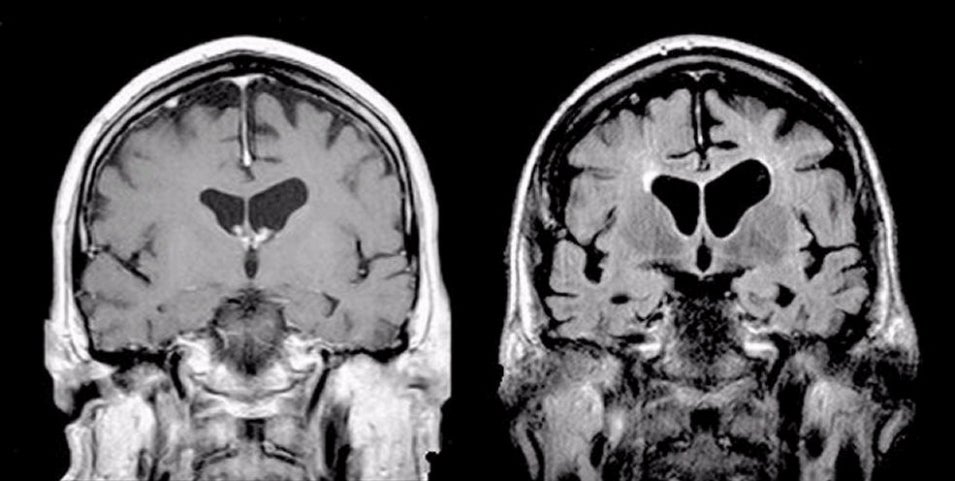
| A 58 year-old man developed slowly progressive memory loss over two years. Initially he had difficulty remembering names and numbers. Later he frequently became lost while driving, and would forget to turn off the shower or the oven after using them. |

![]()
![]()
![]()
![]()
| Alzheimer's Disease.
Coronal MRI scans. These two images were taken two years apart.
They show generalized parenchymal volume loss, which is more marked in
the second (later) image. Note that as the brain volume decreases, the volume
of the CSF spaces compensates and becomes larger. Also note that the
volume loss is somewhat asymmetric, being more prominent on the left side.
Alzheimer's disease (AD) is the most common cause of dementia.
The pathology of AD includes senile plaques, neurofibrillary
tangles, and cortical atrophy. AD has a propensity for the
medial temporal lobe (i.e., hippocampus), resulting in short term
memory loss. The risk of developing AD increases with age. Patients with AD commonly present with slowly progressive memory loss accompanied by language disturbance (especially anomia) and impaired visuospatial skills. |
Revised
11/30/06
Copyrighted 2006. David C Preston